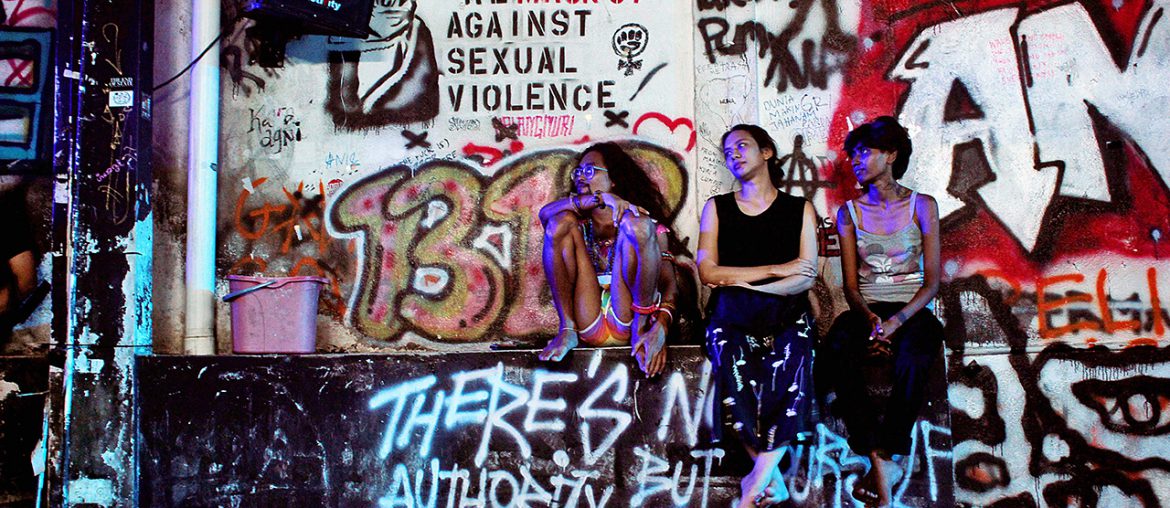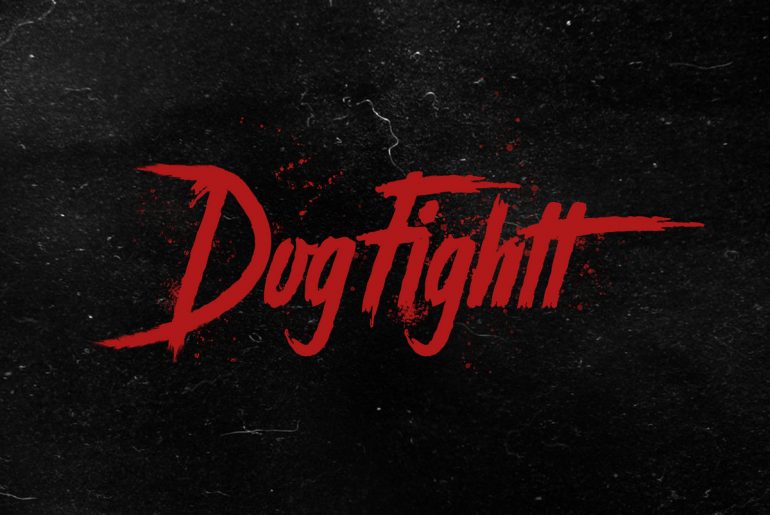By Yuen. Photo by Choi.
The fabled postmodern world we live in is said to offer a “supermarket of identity”, where you can shop and dress your way to membership of a subculture, including one that I have a fond attachment to: punk. “How to dress like a goth punk,” the headline of a tween magazine reads, the full-page spread inside offering mix-and-match ideas on how to dress like the next Siouxsie. You can buy a Ramones t-shirt, or a leather jacket with pre-stitched patches and do what Lady Gaga and Lil’ Wayne have been spotted doing, donning studded jackets during public appearances. Just pick and choose from the menu. Boho chic today, rocker bike rebel for the day after.
At a recent talk of mine, I was asked during the Q&A why I don’t sport a mohawk hairdo even though I dared to use the word “punk” in the title of the talk. Since the talk was in Borneo, I replied that the question was like going to a Penan village and asking them why they’re not carrying blowpipes or only wearing loincloths: no one dresses like that in their everyday life. So for the common lay(wo)man who is not a member of a (sub)culture, the question becomes how do you identify a punk? How do you identifiy a legitimate Bidayuh when they’re not wearing their tree bark vests, like in the tourism brochures?
Spoiler alert: you can’t. The world isn’t as neatly packaged as tourism brochures imply.
Homophobic Malaya and The Rejection
The punks were furious. How could a collective in their own backyard, right under their pierced noses, dare to call themselves both punk and homophobic? Aside from being an oxymoron, it would further tarnish their image as the modern-day noble savage among the already-small sympathetic liberal-middle class, further depleting the few allies present in the sea of fanatical conservatives here in Malaysia. This group calling themselves “Homophobic Malaya” had not only been spreading a religion-backed rhetoric of hate against the LGBTIQ community, but even had the guts to make an appearance in a protest in the city centre carrying the black flag and circled A’s, looking, for all intents and purposes, like your average left-leaning punk. Online snickering and ironic Facebook statuses ensued.
After playing a skinhead in Malaysian skinhead film Ophilia, an ambitious actor-turned-director shot a short 16-minute “documentary” about homeless punks in Kuala Lumpur titled The Rejection. The 16-minute feature, short as it is, caused much consternation in the local punk scene, mainly because of the shoddy research. Any sociology professor would say that spending just three days shooting video footage isn’t enough, and that it fails to give a proper account of any group of people in society, even one that is within one’s own backyard.
To most of us who have been involved out in the scene for a good handful of years, it was eyebrow-clenchingly weird.
In summary, the movie was a mish-mash of footage, with shots of homeless punks “sleeping” on cardboard boxes in broad daylight, paired with emotional narration over footage of punks having fun (and walking together; lots of walking together) in toilets and shopping malls, peppered with sound bites from unnamed (and uncredited) talking heads, before ending with a confusing scene at a recording studio with totally different set of non-punk individuals singing the most clichéd pseudo religious nasyid-esque song, topped off with a rap verse. I don’t even know where to start. This may unfortunately increase the views of the video on YouTube, but watch it as an example of how the holier-than-thou mainstream shows how sympathetic it is to these lost sheep in the most condescending way. Online snickering and ironic Facebook statuses ensued.
Does it really matter?
Of all the subcultures out there, punk should probably be the one least concerned with how the public perceives them. Only approval addicts and government grant panhandlers get their knickers in a knot when the media reflect them in a bad light. In this age of state-funded straight edge motivational talks and anti-drug reggae concerts, incidents like the aforementioned Homophobic Malaya and The Rejection are, essentially, PR disasters that negatively affect the income of parties riding on the exoticness of the Malaysian underground. The standard response of many who felt the same way is to disassociate themselves by hurling abuse online to the parties responsible, probably concerned about how their non-punk colleagues in the workplace perceive them as they try to maintain their persona of kindness beneath the black t-shirt.
As for the rest of the punks, most seem to not be too concerned, and would rather let their work do the talking. Some might get it, and some might not, but that’s how everything is. As a subculture that has been misunderstood and treated with suspicion since its existence, what’s new about being seen in a bad light anyway? Why is there a need to appoint oneself as the defender of punks by replying to every single critical remark seen online?
Will the real punks please stand up?
The word “punk” means so much, yet at the same time it also means nothing at all. For instance, I was told recently that in Germany there’s even a popular magazine called Business Punk. Business Punk? How did these two words get paired together without someone feeling like they were an oxymoron? The magazine, which is fully in German, might provide a suggestion to what has the meaning of word punk means in today’s context: that it represents a smorgasbord of a spirit of rebellion, life-schooled know-hows and unconventional wisdom that sets people apart from the masses. When compared with what the word used to connotate back when it was first starting to be used—”prostitute” (and as sexual properties in prisons) and “young male hustler, gangster, hoodlum, ruffian”—it’s obvious that the meaning of the word sure has changed a lot over the ages.
In the early years, academic interest in subcultures such as Teddy Boys, mods, rockers, skinheads and punks (for example, Dick Hebdige’s classic Subculture: the Meaning of Style) tended to focus on the fashion and the stylistic expressions of urban working class youth. Treating both safety pins and skanking as languages that needed to be decoded, the emphasis was always on the tangible nature of a subculture, aspects that could be perceived, photographed and stored as artifacts. However, paradigm shifts and the development of post-colonialist discourse has seen social scientists depart from frameworks that risk exoticising punks as tribes in urban spaces. The current literature on punks (for example, Lewin & Williams’ 2009 essay “The Ideology and Practice of Authenticity in Punk Subculture”) has shifted to focusing on the values and beliefs of punks instead of clothing and material culture, which they see as being the main claim to authenticity in punk. In everyday practice however, this is easier said than done. It’s easy to tell that someone wearing an Institute t-shirt is a punk, but figuring out what they believe in is a whole other matter.
Never mind the bollocks
So what we have is a situation involving the representation of a subculture in an age of relative ease of ‘membership’, exacerbated by the increasing proliferation of media and the way that the public lumps together fashion and practice, blurring the lines between practicing and “fashion” punks. Even though academia has moved beyond style in their analysis of punk by focusing on values and beliefs of members, cases like Homophobic Malaya and The Rejection will continue to pose a challenge to subcultures, especially to the quarters that try hard to appeal to the public.
In the long run, none of these short-lived issues will matter. The public gaze will shift to the next folk devil—teenage delinquents, kapcai racers, frolicking Muslim couples, transgenders—when their numbers are called. The values and beliefs of punks remain as principles honoured by the practicing members of the subcultures without needing approval from society at large. This is a take home message for any subcultures across all social demarcation: religion, ethnicity, occupation, hobby, you name it.
Punk has always focused on the personal, above any levels of an individual’s commitment. Devotion to punk maxims continues to be the order of the day, since for a punk, the personal is political. No shoddy films and flash in the pan ‘movements’ can come close to shaking the core of the existence of the tight-knit local punk community that I know. Authenticity is only an obsession for the narcissists, while associations and disassociations are ephemeral.
—
 Yuen edits an irregularly published punk ‘zine, Shock&Awe!, and dreams of being the next Shane Smith someday.
Yuen edits an irregularly published punk ‘zine, Shock&Awe!, and dreams of being the next Shane Smith someday.









